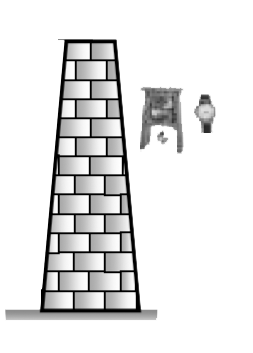(A): If a man with a wrist watch on his hand falls from the top of a tower, its watch gives correct time during the free fall.
(R) : The working of the wrist watch depends on spring action and it has nothing to do with gravity.
Both 'A' and 'R' are true and R' is the correct explanation of 'A'
Both 'A' and 'R' are true and 'R' is not the correct explanation of 'A'
A' is true and 'R' is false
A' is false and 'R' is true
The correct Answer is:A
Topper's Solved these Questions
- OSCILLATIONSBOOK - AAKASH SERIESCHAPTER - OSCILLATIONSEXERCISE - EXERCISE -II Equations of SHM
38 Videos
- OSCILLATIONSBOOK - AAKASH SERIESCHAPTER - OSCILLATIONSEXERCISE - EXERCISE -II Simple pendulum
23 Videos
- OSCILLATIONSBOOK - AAKASH SERIESCHAPTER - OSCILLATIONSEXERCISE - EXERCISE -I Matching type questions
5 Videos
- OSCILLATIONBOOK - AAKASH SERIESCHAPTER - OSCILLATIONEXERCISE - QUESTIONS FOR DESCRIPTIVE ANSWERS
12 Videos
- PHYSICAL WORLDBOOK - AAKASH SERIESCHAPTER - PHYSICAL WORLDEXERCISE - VERY SHORT ANSWER TYPE QUESTIONS
5 Videos
Similar Questions
Knowledge Check
Assertion : A man with a wristwatch spring wound his hand falls the top of a tower The watch show this correct time
Reason : The acceleration due to gravity have no effect on time period of watch of the time of fillingAIf both assertion and reason are true and the reasopn is correct explanation of the assertionBIf both assertion and reason are true and but not the correct explanation of assertionCIf assertion is true but the reason is falseDIf both assertion and reason are falseA man having a wrist watch and a pendulum clock rises on a TV tower. The wrist watch and pendulum clock per chance fall from the top of the tower. Then
 ABoth will keep correct time during the fall.BBoth will keep incorrect time during the fall.CWrist watch will keep correct time and clock will become fastDClock will stop but wrist watch will function normally.
ABoth will keep correct time during the fall.BBoth will keep incorrect time during the fall.CWrist watch will keep correct time and clock will become fastDClock will stop but wrist watch will function normally.
Answer the following questions: (a) Time period of particle is S.H.M. depends on the force constant k and mass m of the particle :T=2π√m/k. A simple pendulum executes S.H.M. approximately. Why then is the time-period of a pendulum independent of the mass of the pendulum?
(b) The motino of simple pendulum is approximatley simple harmonic for small angles of oscillation. For large angle of oscillation, a more involved analysis (beyond the scope of this book) shows that T is greater that 2π√l/g. Think of a quanlitative argument to appreciate this result.
(c) A man with a wrist watch on his hand falls from the top of tower. Does the watch give correct time during the free fall?
(d) What is teh frequency of oscillation of a simple pendulum mounted iin a cabin that is freely falling under gravity?
View SolutionIf a stone dropped from the top of a tower travels half, of the height of the tower during last second of its fall, the time of fall is (in seconds)
View SolutionThe balance wheel of a mechanical wriest watch has a frequency of oscillation given by f=(12π)√C/I, where I is the moment of inertia of the wheel and C is the torisonal rigidity of its spring. The wrist watch keeps accurate time at 250C, How many seconds would it gain a day at .−250C if the balance wheel made of aluminium ?
(Given, αAl=25.5×10−6/0C)
View SolutionA body falls freely from the top of a tower, and during the last second of its flight it falls 59 th of the whole distance. The height of the tower in meters and the time of motion in seconds are 44.1 m and 3 sec.
View SolutionA uniform spherical shell of mass M and radius R rotates, about a vertical axis on frictionless bearing. A massless cord passes around the equator of the shell., over a pulley of rotational inertia I and radius r and is attached to small object of mass m that is otherwise free to fall under the influence of gravity. There is no friction of pulley's axle, the cord does not slip on the pulley. What is the speed of the object after it has fallen a distance h. from rest? Use work-energy considerations.

View SolutionA uniform spherical shell of mass M and radius R rotates, about a vertical axis on frictionless bearing. A massless cord passes around the equator of the shell., over a pulley of rotational inertia I and radius r and is attached to small object of mass m that is otherwise free to fall under the influence of gravity. There is no friction of pulley's axle, the cord does not slip on the pulley. What is the speed of the object after it has fallen a distance h. from rest? Use work-energy considerations.

View Solution
